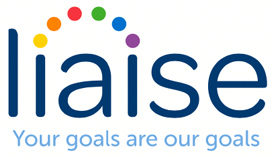Communication plays a vital role in human interaction, but individuals with autism often face unique challenges in this area. They may find expressing thoughts, understanding social cues, and other traditional forms of communication to be challenging or confusing.
Assistive technology can be life-changing for people with autism. These gadgets and devices can be used as communication tools to support and enhance communication for people with autism. This can include using pictures, sign language, visual aids, or speech-output devices like computers.
Keep reading to learn how the transformative power of assistive technology supports people with autism in bridging communication gaps, fostering meaningful interactions, and ultimately improving their quality of life.
Understanding Assistive Technology
Assistive technology (AT) is helpful technological aids for people with autism. They range from the very high-tech to simple sound boards for speech and language development.
Communication can at times be a major hurdle for people with autism. AT are communication tools such as picture symbols, sign language, or speech-generating devices, that provide alternative means of expression for those who find traditional forms of communication challenging.
Social interaction can also be challenging for people with autism. Social skills training apps, social story software, or video modelling tools can be utilised to provide guidance and practice in social scenarios. These technologies empower individuals with autism to develop and improve their social skills whilst encouraging greater independence.
Examples of Assistive Technologies
Here are different types of assistive technology and examples of how they can help:
- Augmentative and Alternative Communication (AAC) devices: These tools help people with autism who have difficulty speaking. Communication boards, speech-generating devices, or mobile apps with pictures and symbols allow them to express their thoughts and feelings.
- Visual supports: Visual aids help people with autism in understanding and organising information. Visual schedules, social stories, and cue cards can model positive daily routines, social situations, and appropriate behaviour.
- Sensory integration tools: Sensory devices help individuals with autism manage sensitivities to sounds, textures, or movements. Examples include weighted blankets, sensory swings, noise-cancelling headphones, and sensory toys.
- Educational and learning tools: Software, apps, and games designed for people with autism are a fun way to learn new skills. They can focus on anything from reading and maths to problem-solving and communication skills.
- Social skills training tools: Virtual reality programs or apps allow individuals to practise social skills in a safe environment. These tools can help encourage positive social interaction and emotional recognition.
- Assistive technology for daily living: Devices and apps can assist with everyday tasks, such as time management, personal organisation, and independent living skills. Reminder apps, task management systems, and smart home technology can also simplify daily routines.
- Wearable devices: Smartwatches or bracelets can provide reminders, prompts, or calming sensory feedback.
- Virtual and remote support tools: Virtual platforms and apps enable people with autism to access therapy, coaching, or educational support remotely.
Benefits and Limitations of Assistive Technology
Assistive technologies can be life-changing for people with autism and other complex needs. Here are just some of their many benefits:
- Improved Communication: Assistive technology provides alternative means of expression, allowing people with autism to effectively convey their thoughts, needs, and emotions. This often leads to improved social interactions, reduced frustration, and increased participation in everyday life.
- Increased Independence: Assistive technology empowers individuals with autism to become more independent in daily activities. Visual supports, task management systems, and reminder apps help with organising routines, time management, and personal organisation.
- Enhanced Self-Expression: Art-based apps, music therapy tools, and sensory devices offer positive outlets for self-expression and creativity. This promotes self-esteem, confidence, and personal growth.
- Skill Development: Educational and learning tools tailored for people with autism provide engaging and interactive learning experiences, fostering skill development in various areas.
Despite their many benefits, there are also some limitations to assistive technology. It’s important to be aware of these limitations so that you can provide the best support:
- Cost: Assistive technology can be expensive, especially advanced devices and specialised software. The cost may limit access for some individuals and families, making it a potential barrier to obtaining the most effective support.
- Availability: The availability of specific assistive technology devices and resources can vary depending on location and resources.
- Individual Variability: Not all assistive technologies work equally well for every individual with autism. Each person has unique needs, preferences, and abilities, making it important to identify the right technology for them.
- Training and Support: Assistive technology can be complicated and learning to effectively use it can require additional training and support.
Tips for Using Assistive Technology
Here are some practical tips to help you and your loved ones to get the most out of assistive technology. Always keep in mind that each individual is unique, so what works for one person may not work for another. It’s essential to be patient, flexible, and open to trying different approaches and technologies until you find the best fit:
- Collaborate with Professionals: Seek guidance from professionals such as speech therapists, occupational therapists, and educators. They can provide valuable insights and recommendations for suitable assistive technology options.
- Start with Simple Technologies: Begin with simple assistive technologies that match the person’s abilities and comfort level. Gradually introduce more advanced technologies as they become familiar with the basics.
- Provide Training and Support: Ensure that the individual and everyone involved receive adequate training on how to effectively use the new technology.
- Customization and Personalization: Always tailor the assistive technology to the person’s specific needs. Many technologies allow for customization, such as adjusting settings, adding personalised visuals, or programming personalised prompts.
- Consistency and Routine: Try and incorporate the use of assistive technology into daily routines to encourage familiarity and consistency. Consistent use helps individuals with autism become more comfortable and proficient in utilising the technology.
- Reinforcement and Positive Feedback: Provide positive reinforcement and praise when individuals successfully use assistive technology to achieve their goals. This helps motivate and encourage their continued engagement and progress.
- Regular Evaluation and Updates: Periodically evaluate the effectiveness of the assistive technology and make necessary adjustments or updates based on the individual’s changing needs and progress.
- Consider Accessibility: Ensure that the chosen assistive technology is accessible and user-friendly for individuals with autism. Consider factors such as device size, interface simplicity, visual clarity, and compatibility with other assistive devices.
- Foster Independence: Encourage individuals with autism to actively participate in the selection and use of assistive technology. Promote their autonomy and independence by gradually transferring responsibility for managing and utilising the technology to them as appropriate.
Specialist Autism Support from Liaise
Here at Liaise, our mission is to enrich the lives of people with autism and enable them to live happy, fulfilling lives through positive, personal and progressive support.
Through our residential and supported living services, people with autism can learn, work and create lifelong friendships in a positive and structured environment.
We are here to support you and your family. If you would like to learn more about our autism care and support services, do not hesitate to contact our friendly team.





